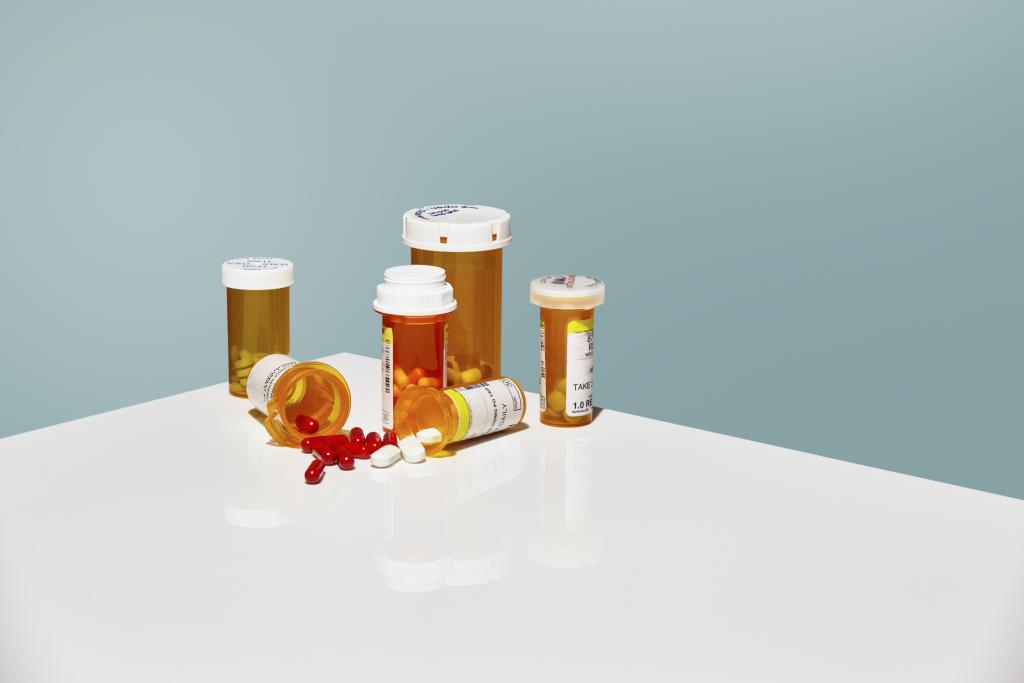Prescription medication isn’t cheap. And when your health depends on prescription medications, the costs can add up fast – according to the Organization for Economic Cooperation and Development¹, the average American spends $1,174 a year on prescription drugs.
But you don’t have to spend thousands on medications you need. If you’re tired of fluctuating drug prices and sky-high out-of-pocket costs, here are five simple and effective ways to save money.
 1. Order Pills in Bulk
1. Order Pills in Bulk
You can cut the cost of your prescription medication by ordering it in bulk. Purchasing in bulk can lower your prescription drug costs by 50 percent or more.
Just request a 90- or 120-day prescription from your doctor and you’ll be eligible for bulk refills to save money and make fewer trips to the pharmacy. Typically, a 90-day supply will give you a much better value than a single month’s supply. For example, GoodRx² reports that a 30-day supply of the cholesterol medication Lipitor costs 30 cents per tablet, but a 90-day refill brings the cost down to 17 cents each.
Even generic medications are cheaper when purchased in bulk. A month’s supply of the hypertension medication lisinopril is on the $4 generic drug list at most pharmacies like Wal-mart³, but a three-month supply only costs $10.
2. Choose Pharmacy Pickup Over Mail Order
If you think retail pharmacies charge too much, switching to an online pharmacy can be a good idea. Having prescription drugs delivered to your door is convenient, but it’s also expensive.
Whenever you order prescription delivery or sign up for a mail order plan, you’ll pay shipping charges that inflate your costs. On top of this added cost, the Virginia Commonwealth University⁴ found that mail-order pharmacies are more expensive: mail-order pharmacies charge 96 cents per pill for a 90-day supply of popular medications while retail pharmacies charge 94 cents per pill.
Skip the convenience factor and head to your local pharmacy instead. You’ll save money, and you may even get the added convenience of doorstep delivery for free. Many big retailers, such as Wal-mart and Walgreens, will mail you your prescriptions if you can’t make it to your local store.
3. Sign up for a Discount Card
Whether you have health insurance or not, a discount card can help you get better prices on most prescription drugs. Drug companies partner with pharmacy managers to negotiate preferential prices through retail chains. In some cases, these programs offer customers better deals than private health insurance companies do.
The New York Times⁵ found that GoodRx offered lower prices than insurance companies on 40 of the 100 most frequently prescribed medications. Programs like Blink Health, WeRx, and GoodRx are free to join. These companies make money by earning kickbacks from partners based on the amount of business they generate.
If the discount card offers a better rate than your insurance company, you can get the lower price. It’s the perfect solution for those who want to find lower prices but don’t have the time or ability to comparison shop.
4. Get Assistance from Nonprofit Organizations
If you’re struggling to afford your medications, you might be eligible for assistance through public and privately funded programs besides Medicaid and Medicare. The Partnership for Prescription Assistance is a non-profit organization funded by the pharmaceutical industry. It matches consumers with local, state and national programs and low-cost clinics that cover specific drugs or medical conditions.
Another program is Rx Outreach, a non-profit mail-order pharmacy that offers flat-rate prices on a wide selection of medications. Eligibility is based on your annual income and household size. If you meet the income requirements, you may qualify for reduced-rate prescriptions. The National Council on Aging also offers a BenefitsCheckUp tool that helps Americans locate prescription assistance programs in their area.
5. Access Manufacturer Discount Programs
Many prescription drug makers offer patient assistance programs (PAPs). These programs are designed for consumers who don’t have health insurance coverage or who cannot afford medications on their own. Most PAPs provide co-pay coupons and discount vouchers that substantially reduce the cost of name-brand medications.
Some prescription drug makers will also offer discount cards for a specific medication. Check with your doctor to see if there are any savings available through your medications’ manufacturers or visit the manufacturers’ websites for available offers. These discounts could cut your cost – and some may even make your out-of-pocket cost $0 for a limited time.
The Next Step Toward Prescription Savings
You shouldn’t have to forego medications due to cost barriers. If you need help paying for prescriptions, there are options. All it takes is a bit of knowledge and some smart research into the currently available discounts, deals, and cost-cutting options available from different pharmacies and medication manufacturers.
Last but not least, communicate with your doctor. If a drug is too expensive, find out if a generic or lower cost alternative is available. Your doctor may even be able to help you find free samples, a discount card or plan, and other ways to save. But, above all else, make sure you’re staying on top of the latest options by doing research of your own each month.
Like anything, it’s always a good idea to be aware of the latest research. We recommend comparing at least 3 or 4 options before making a final decision. Doing a search online is typically the quickest, most thorough way to discover all the pros and cons you need to keep in mind.


